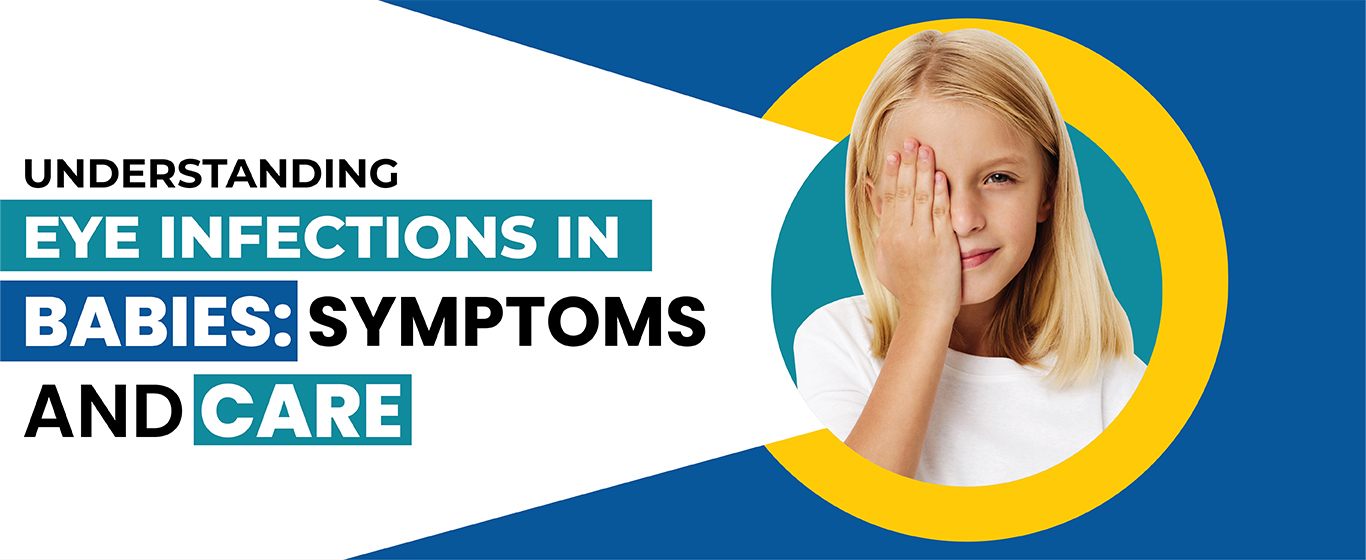
Eye infections in babies are quite common and occur in children worldwide. It’s a normal part of their development and not something to be overly alarmed about. If the child’s eye appears red, particularly the white part and the inside of the lower lid, it is likely a condition known as conjunctivitis or pinkeye.
If your baby has an eye infection, it is essential to take your child to an eye specialist as soon as possible. Eye infections generally last seven to ten days. The specialist diagnoses the issue and prescribes medication if necessary. Please note that you should not use previously opened medication or someone else’s eye drops in your child’s eye, as this can cause serious harm.
Your role as a parent is crucial in seeking prompt treatment. By identifying the symptoms early, you can prevent complications and ensure your baby’s comfort. Here’s a guide to help you understand the key symptoms and how to care for your little one.
1. Pus in the Eye, Yellow or Green Discharge
Ayurvedic treatment for eye infections may include inflammation caused by pain and itching. However, it can also result from an allergic reaction or, in rare cases, a more severe condition. Symptoms usually include tearing and discharge as the body attempts to heal. A yellow or green discharge is one of the most telltale signs of a bacterial eye infection. This discharge can be noticeable, often accumulating in the corners of the eyes. Unlike the clear or slightly sticky discharge of viral infections, bacterial discharge is thicker and more pronounced.
What to Do:
Gently clean the discharge with a clean, warm, damp cloth.
Avoid using the same cloth for both eyes to prevent the spread of the infection.
Consult your eye specialist for appropriate antibiotic eye drops or ointments.
2. Dried pus on the Eyelids and Eyelashes
Infections often lead to dry pus forming on the eyelids and eyelashes, particularly after sleep. This can make it difficult for babies to open their eyes and be distressing.
What to Do:
First, soak a cotton ball or pad in warm water and gently wipe away the dried pus.
Ensure you wash your hands thoroughly before and after touching your baby’s eyes.
Use a new cotton ball for both eyes to avoid cross-contamination.
3. Eyelashes Stuck Together After Sleep
It’s common for eyelashes to become stuck together due to the accumulation of discharge and dried pus. These symptoms can make it hard for babies to open their eyes, especially in the morning.
What to Do:
Use a clean, warm, damp cloth to separate the eyelashes gently.
Be patient and avoid pulling on lashes to prevent discomfort.
Regularly clean your eyes as described to keep the area as clean as possible.
2. Red or Pink Whites of the Eye
While the whites of the eyes may not always be red or pink, this symptom often accompanies bacterial eye infections. Redness indicates inflammation and irritation, which can be painful for your baby.
What to Do:
Keep your eyes clean and free from discharge to reduce irritation.
Consult your eye specialist for advice on anti-inflammatory eye drops if redness persists.
3. Puffy Eyelids
Puffy eyelids are another common symptom of bacterial eye infections. Swelling can make the eyes appear more closed than usual and may be accompanied by redness and tenderness.
What to Do:
Apply a cool, clean cloth to the eyelids to help reduce swelling.
Ensure your baby gets plenty of rest to aid in the healing process.
Follow your pediatrician’s recommendations for any prescribed treatments.
When to Seek Medical Help
If you notice any of these symptoms, it’s essential that you contact your Eye specialist as they can do proper diagnosis and prescribe the necessary treatment. It’s true that when such eye infections are not treated it can cause chronic eye disorders and therefore one should opt for Ayurvedic treatment for eye infections
Prevention is always better than cure. Here are some tips to help prevent bacterial eye infections in babies:
Practice good hygiene by washing your hands before and after touching your baby’s face.
Keep your baby’s bedding and towels clean and change them regularly.
Avoid exposing your baby to individuals with eye infections.
Ensure your baby doesn’t rub their eyes with dirty hands or objects.
Conclusion
Bacterial eye infections in babies are a common concern, but with the right care and attention, they can be effectively managed. By recognizing the symptoms and following appropriate cleaning and treatment practices, you can help ensure your baby’s eyes stay healthy and clear. Always consult your pediatrician for personalized advice and treatment options.
You Can Also Read For More Posts
How does smoking cause cataracts
5 natural options to get relief from eye infection
To Know More, Talk to our Consultant. Dial +91-8235808080
